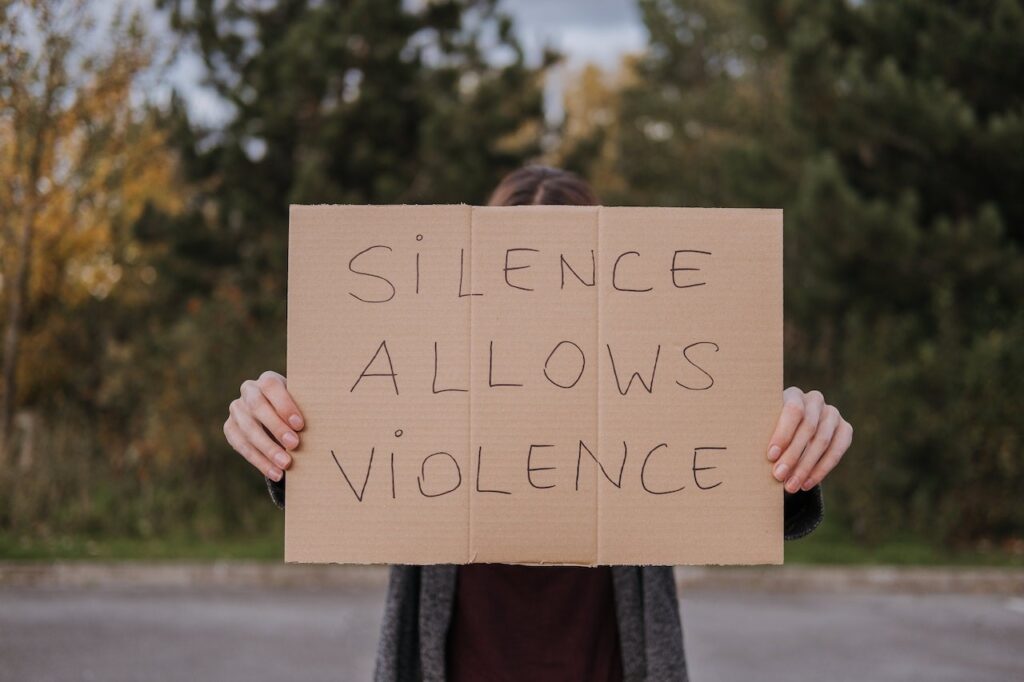
You may belong to one or more community organizations that can take a stand against domestic violence. These organizations can be formal or informal and can include such entities as: faith based organizations, employment based organizations, private businesses, youth groups, sports organizations, civic organizations, senior centers, social groups, home owners groups, community watch groups, special interest groups, informal neighborhood groups, parenting groups, school based groups, or any other group you connect with. Any place where people come together for a common purpose is an opportunity to educate and raise awareness about an issue that affects us all. A group or community-based approach to ending violence is a very effective way of reaching out to a greater number of people. Resources, time and creative energy can be combined to create changes in attitudes and behaviors. People working together can send a community wide message that there’s no excuse for domestic violence and it is our business.
How you can get your group started:
- Contact your local domestic violence program and invite them to come and speak to your group. Learn more about the issue and what the needs are for your community.
- Determine a focus for your response. You may choose to reach out to a particular group of people such as people of color, people with disabilities, people in later life, the gay and lesbian community, men, healthcare workers, clergy, teens, parents, or other groups.
- Determine your message. If you plan to reach potential victims, you may want to focus your message on what domestic violence is and where they can go for assistance. If you are reaching out to potential responders to domestic violence, your message may be that domestic violence is your business.
- Determine how to get your message to the group you are focusing on. There are many ways to reach people ranging from word of mouth to extensive media campaigns. Some simple suggestions and sample public awareness materials are included in this packet.








